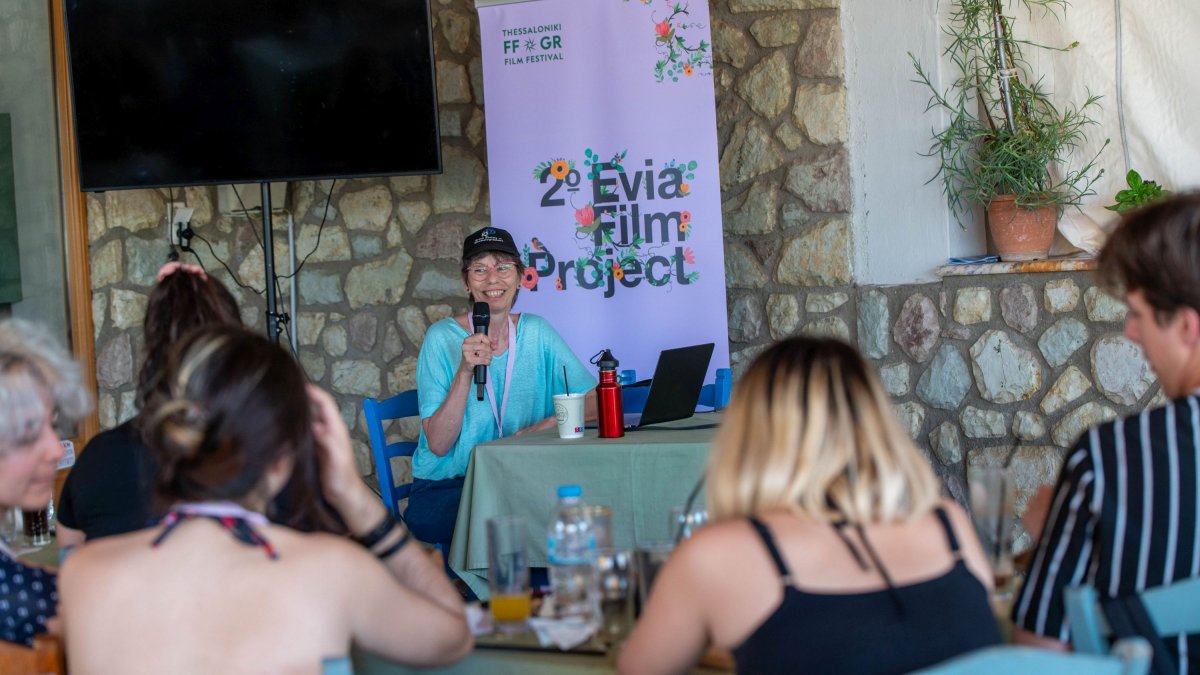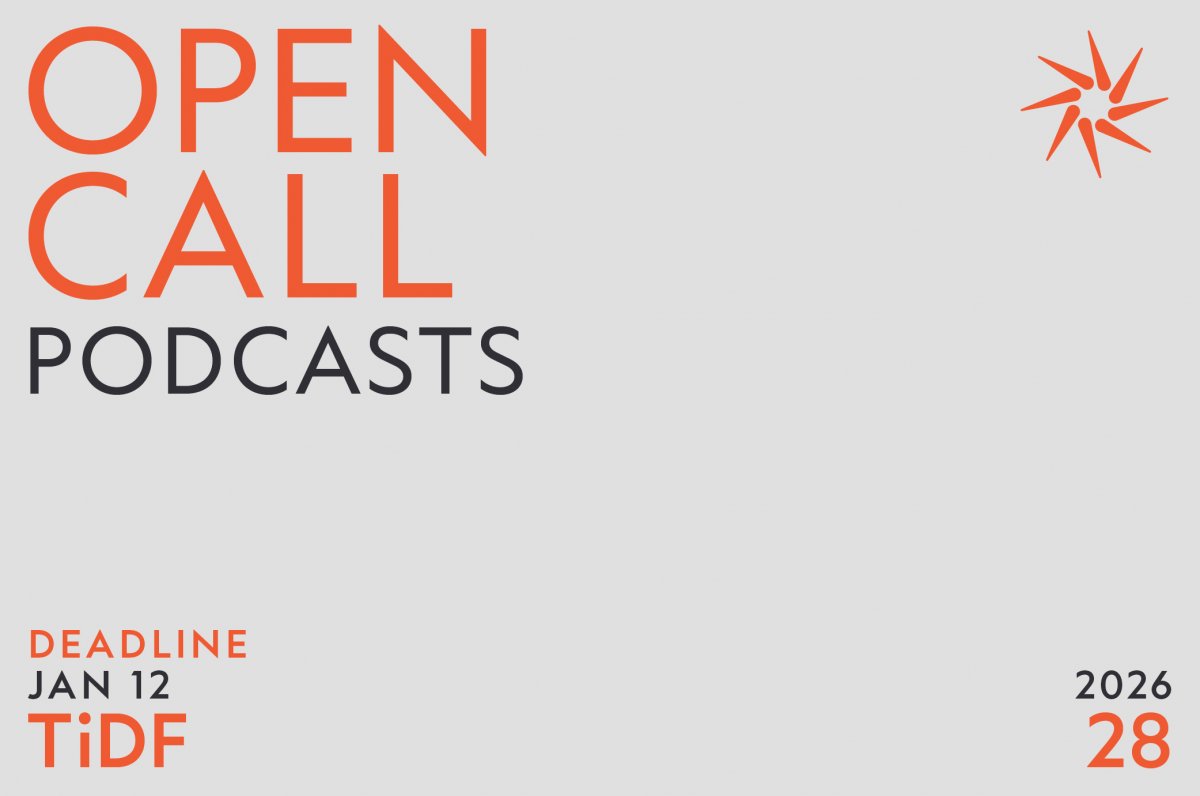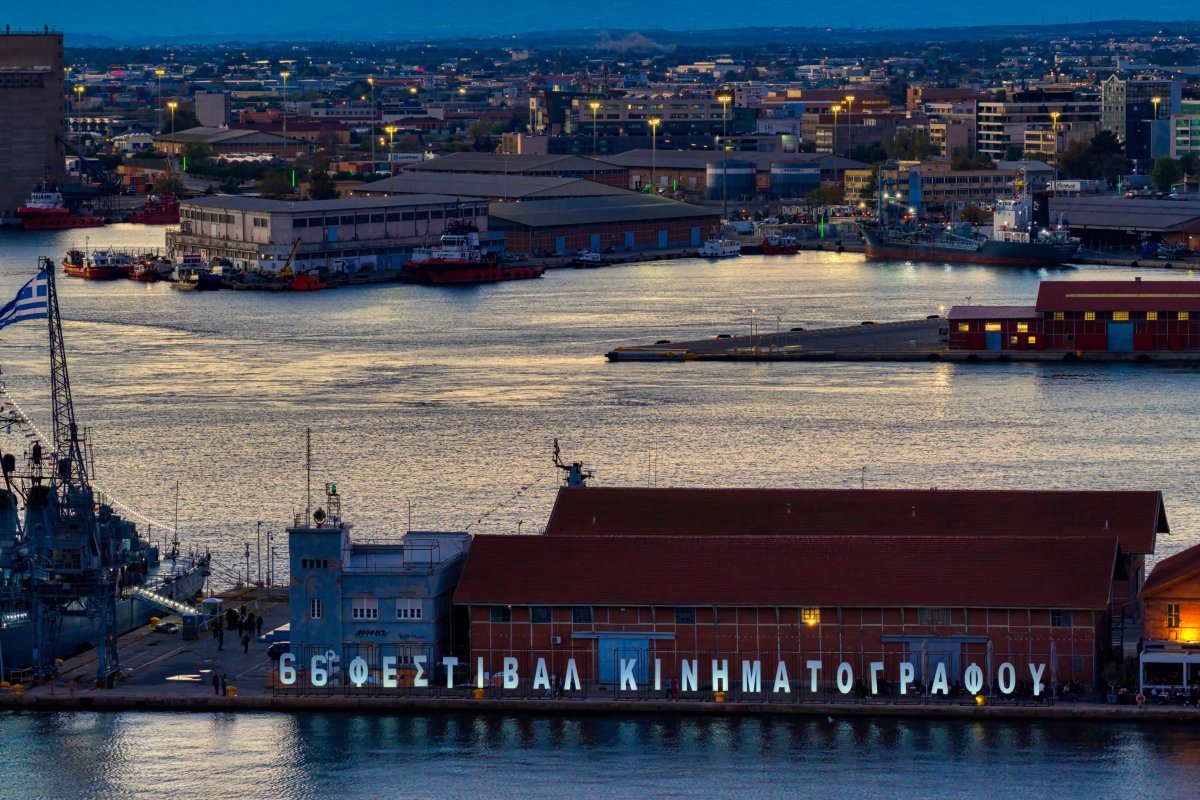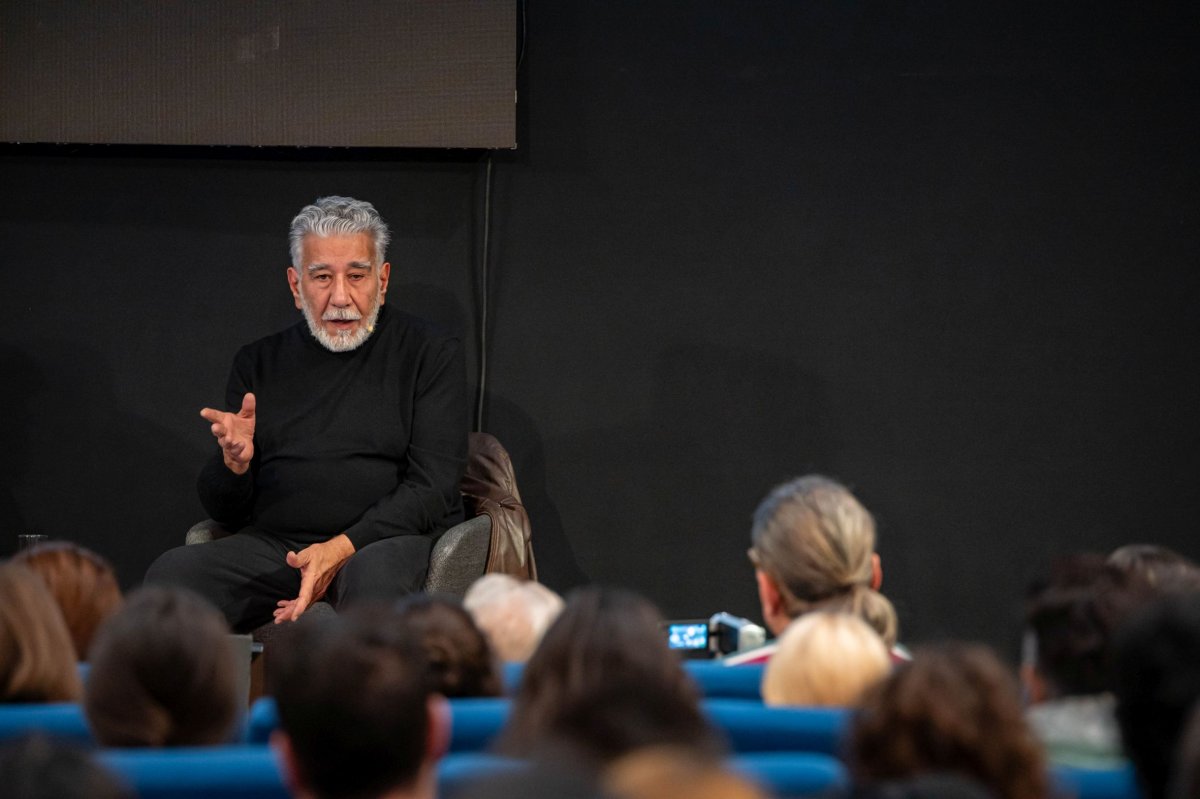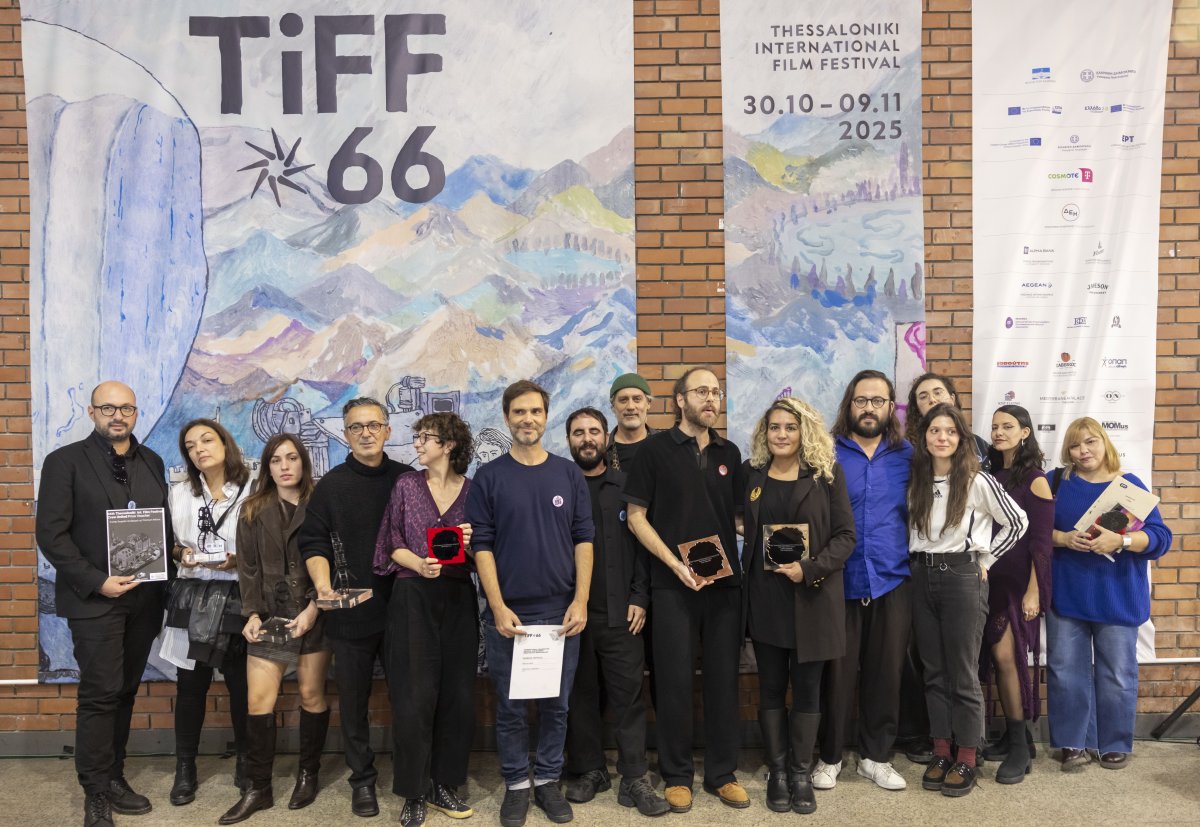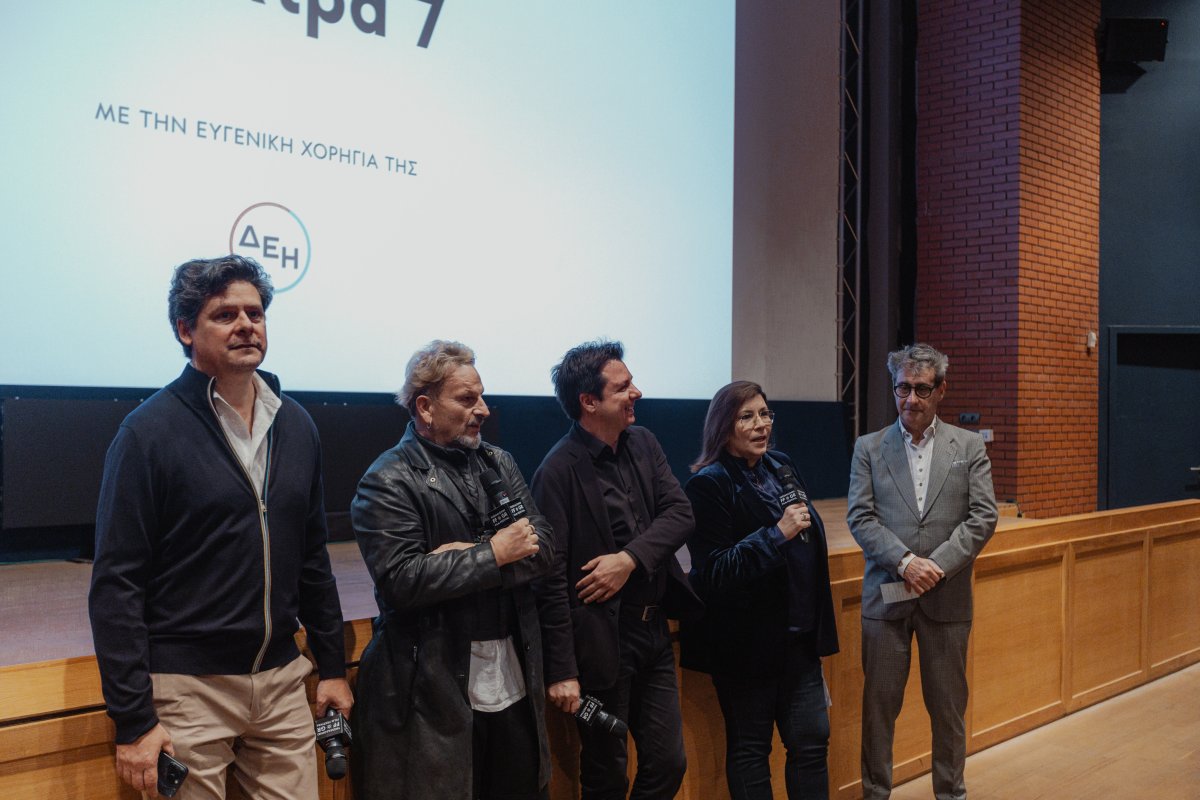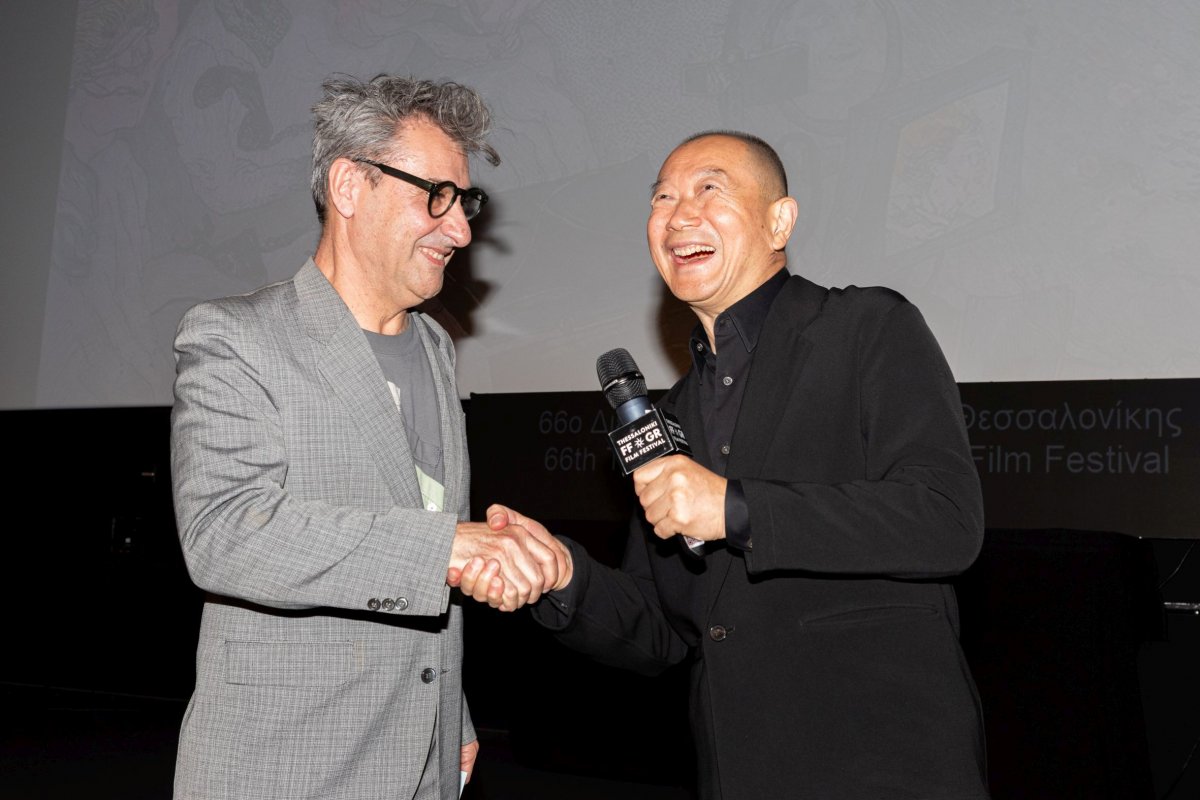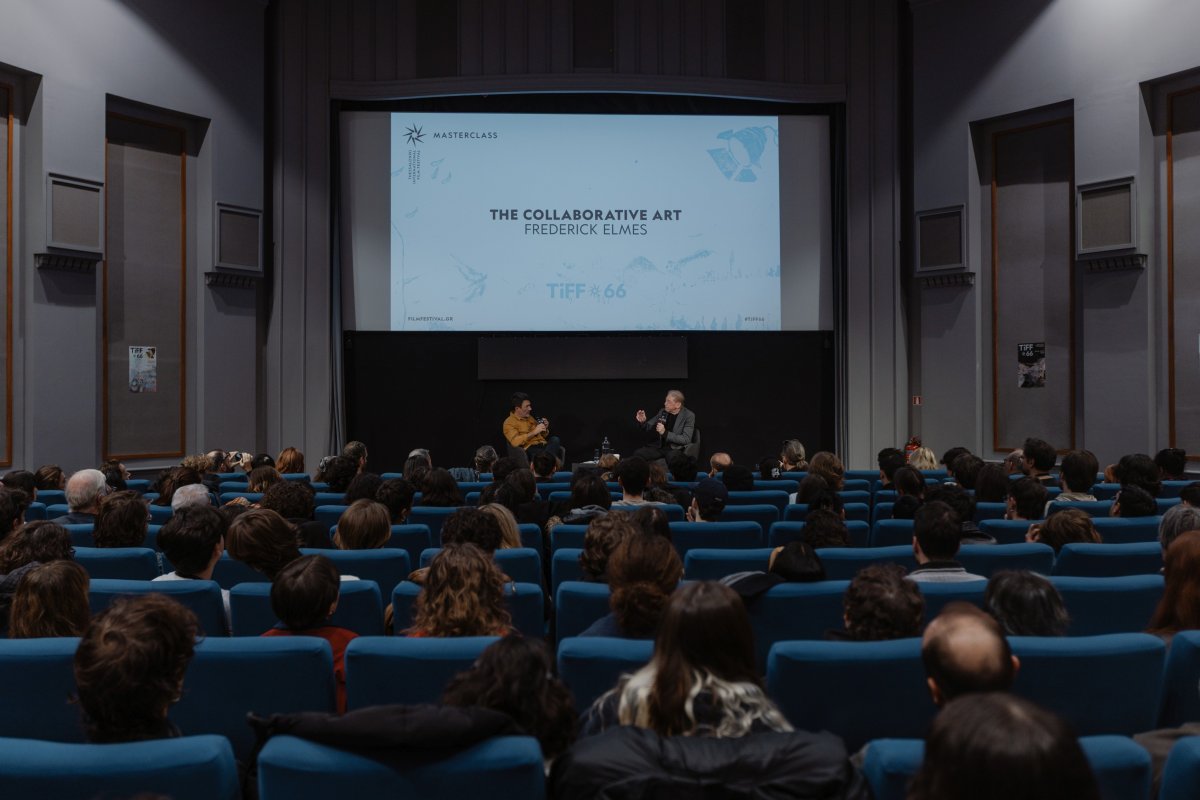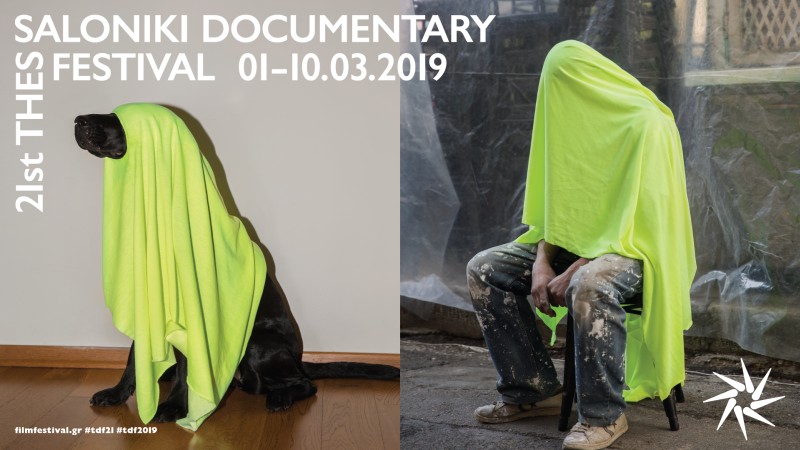Within the framework of the 2nd Evia Film Project, cinematographer Olympia Mytilinaiou, who has collaborated with renowned creators from Greece and abroad, delivered a masterclass on Saturday, June 24th, in Agia Anna, titled "How to Find the Light," explaining to the audience all the unseen and magical aspects of her profession.
Kicking off the masterclass, Ms. Mytilinaiou stated that the most creative aspect lies in the choice of how the cinematography will be. "The first reading of the script is also the freest, as you are not influenced by others yet," she mentioned, emphasizing that this first reading is the most important. After that, you encounter limitations and determine the characteristics required to portray the script. These limitations may concern the time period (contemporary, historical, etc.), the genre of the script (thriller, comedy, drama, musical), the location (outdoors, indoors, rural areas), or the cast. Once you have all these elements, she noted, you meet with the director. Ms. Mytilinaiou explained that this step is crucial because it allows you to see the film through the eyes of the director. You have to combine your own knowledge with the director's knowledge, she said, while referring to the importance of communication between the two parties. Through discussions with the director, you can create an outline of what the cinematography will look like and what tools to use. Then you start researching what's going on in the script. "As a source of inspiration, you can use paintings (for still photography) and films. And that's one way to get inspired. Then, you try to give a different form to what has inspired you," she added.
Immediately after, she discussed the process of choosing what image you want to shoot: whether it will be in color, black and white, or clean. "You need to select the camera and lenses you will use. You need to find a way to figure out which lens to choose for that particular project," she stated. She added that the format, i.e., the size of the image, plays a role in cinematography. Ms. Mytilinaiou mentioned that we have now transitioned from film to digital images. " For me, film is unparalleled, but it is expensive and primarily used in high-budget productions. In digital imagery, there are infinite camera options. It is good to keep up with technology. Digital imaging is still relatively new and has a lot of room for development. Lenses are the alpha and omega in the image, and you enter a selection process that requires knowledge," she elaborated.
She also mentioned the depth of field as a tool in the selection of the cinematography. "You can also use filters, choose the desired color (bold or soft), in collaboration with the production designer who selects the color palettes, the set designer, and the director. Gradually, you choose what you need to build the image you want, as required by the script and desired by the director. All these choices also have an impact on the budget. The budget is not limitless, and each film has its own budget for cinematography. You are not free to do whatever you want," she emphasized. She encouraged the students of the Department of Digital Arts and Cinema of the National and Kapodistrian University of Athens to let themselves be free, and unleash their creativity, as cinema is about creation and collaboration.
Summarizing what cinematography is, she said that it includes lighting, framing, movement, format, color, camera, lenses, and grip equipment. She emphasized that a cinematographer is confronted with all these elements before determining the visual style of the film they want to create.
As for how she decided to pursue cinematography, she explained that she attended the Stavrakos Film School, where she was captivated by photography. She added that it is a challenging profession that rewards you in the end, and she referred to her work on films such as Strella, Dodo, and Miss Violence.
Regarding natural light, she stated that she believes more in using natural light rather than heavily tampering with something that is natural and said that if one learns to work with natural light, one can work with artificial light. When asked how you can control natural light, Ms. Mytilinaiou said that there is no need to control it and added that every cinematographer has certain weapons and tools that they can use to achieve the desired result. "Photography offers a lot of creative exploration, you need to have enthusiasm to delve into it," she emphasized.
When asked if she still operates the camera, she responded that it depends on the project. She mentioned that in the film Dodo directed by Panos H. Koutras, she had an operator, Leonidas Arvanitis. "Nowadays, I don't operate the camera as much, and I miss it. I don't like hand-held camera work, it is exhausting for the cinematographer because they have so many things to manage, and hand-held camera work requires time. You have to have time on set to do it all together,” she said, noting that having an operator, if possible, is preferable.
In response to a question about how much the final image depends on her own personal style and how much it is influenced by the director and the screenplay, she answered, "You see if you like something or not. If you don't like it, you tell the director. If the director is a collaborator, they understand that there is an issue. It's all a matter of collaboration."
She also spoke at length about the issue of equality in cinema, stressing that the film industry is a challenging space for women professionals, and highlighted both the importance of education and the need for creating specific programs to help women filmmakers. She mentioned that only 3% of cinematographers worldwide are women and that in Greece, only three women work as directors of photography. "Unfortunately, things cannot change without women having to fight for their rights.” She also shared her personal experience of facing discouragement from pursuing a career in cinematography at the start of her career due to her gender and highlighted the importance of support measures for mother cinematographers. She also mentioned that despite her notable achievements, the attitude towards her remains unchanged because society itself has not changed. "If society doesn't change, our position in the film industry won't change," she went on to add. Concluding, she expressed her hope that progress can be made more rapidly in the future.
Evia Film Project is the Festival’s third pillar of activities, adding its name to the International Thessaloniki Film Festival, held in November, and the Thessaloniki Documentary Festival, held in March. Its goal is to consolidate Northern Evia, a region severely hit by the 2021 calamitous wildfires, as an international hub of green cinema. Evia Film Project is actualized with the support of the Hellenic Ministry of Culture and Sports, within the framework of the Reconstruction Plan for Northern Evia, in collaboration with the Region of Central Greece, the Greek Film Centre, the Municipality of Istiea-Edipsos, the Municipality of Mantoudi-Limni-Agia Anna. Thessaloniki Film Festival is teaming up with all institutions and bodies seated in Evia and the Department of Digital Arts and Cinema of the National and Kapodistrian University of Athens in Psachna.


